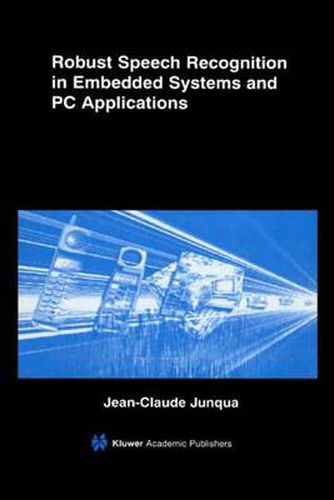Readings Newsletter
Become a Readings Member to make your shopping experience even easier.
Sign in or sign up for free!
You’re not far away from qualifying for FREE standard shipping within Australia
You’ve qualified for FREE standard shipping within Australia
The cart is loading…






This title is printed to order. This book may have been self-published. If so, we cannot guarantee the quality of the content. In the main most books will have gone through the editing process however some may not. We therefore suggest that you be aware of this before ordering this book. If in doubt check either the author or publisher’s details as we are unable to accept any returns unless they are faulty. Please contact us if you have any questions.
This work provides a link between the technology and the application worlds. As speech recognition technology is now good enough for a number of applications and the core technology is well established around hidden Markov models many of the differences between systems found in the field are related to implementation variants. Embedded applications are usually cost sensitive and require very simple and optimized methods to be viable. The text reviews the problems of robust speech recognition, summarizes the current state of the art of robust speech recognition while providing some perspectives, and goes over the complementary technologies that are necessary to build an application, such as dialog and user interface technologies. The work is divided into five chapters. The first one reviews the main difficulties encountered in automatic speech recognition when the type of communication is unknown. The second chapter focuses on environment-independent/adaptive speech recognition approaches and on the mainstream methods applicable to noise robust speech recognition. The third chapter discusses several critical technologies that contribute to making an application usable. It also provides some design recommendations on how to design prompts, generate user feedback and develop speech user interfaces. The fourth chapter reviews several techniques that are particularly useful for embedded systems or to decrease computational complexity. It also presents some case studies for embedded applications and PC-based systems. Finally, the fifth chapter provides a future outlook for robust speech recognition, emphasizing the areas that the author sees as the most promising for the future.
$9.00 standard shipping within Australia
FREE standard shipping within Australia for orders over $100.00
Express & International shipping calculated at checkout
This title is printed to order. This book may have been self-published. If so, we cannot guarantee the quality of the content. In the main most books will have gone through the editing process however some may not. We therefore suggest that you be aware of this before ordering this book. If in doubt check either the author or publisher’s details as we are unable to accept any returns unless they are faulty. Please contact us if you have any questions.
This work provides a link between the technology and the application worlds. As speech recognition technology is now good enough for a number of applications and the core technology is well established around hidden Markov models many of the differences between systems found in the field are related to implementation variants. Embedded applications are usually cost sensitive and require very simple and optimized methods to be viable. The text reviews the problems of robust speech recognition, summarizes the current state of the art of robust speech recognition while providing some perspectives, and goes over the complementary technologies that are necessary to build an application, such as dialog and user interface technologies. The work is divided into five chapters. The first one reviews the main difficulties encountered in automatic speech recognition when the type of communication is unknown. The second chapter focuses on environment-independent/adaptive speech recognition approaches and on the mainstream methods applicable to noise robust speech recognition. The third chapter discusses several critical technologies that contribute to making an application usable. It also provides some design recommendations on how to design prompts, generate user feedback and develop speech user interfaces. The fourth chapter reviews several techniques that are particularly useful for embedded systems or to decrease computational complexity. It also presents some case studies for embedded applications and PC-based systems. Finally, the fifth chapter provides a future outlook for robust speech recognition, emphasizing the areas that the author sees as the most promising for the future.